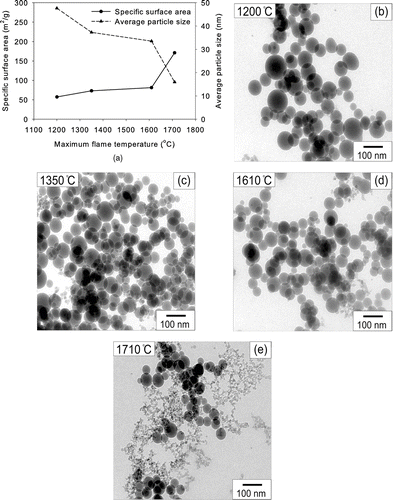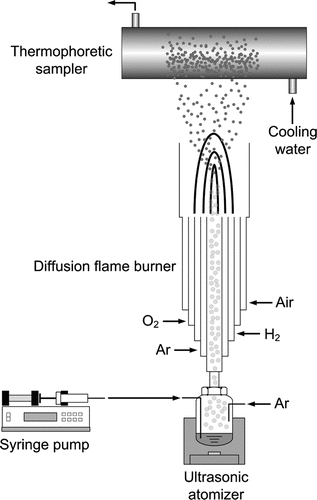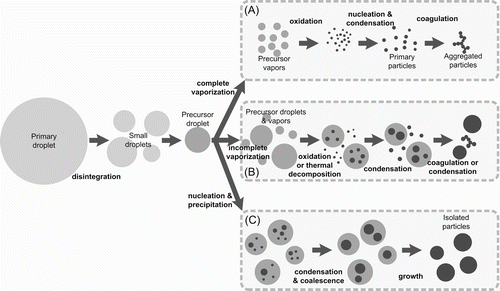Figures & data
FIG. 3 (a) Specific surface areas and average particle sizes of silica particles made from TEOS at various concentrations at 1610°C. TEM micrographs of silica particles for (b) 0.1, (c) 0.3, and (d) 0.5 M. (e) Specific surface areas and average particle sizes of silica particles produced from TEOS at various heights from the top of the burner at 0.3 M and 1610°C.
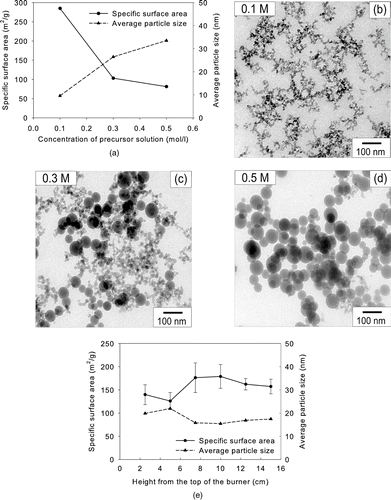
FIG. 4 (a) Specific surface areas and average particle sizes of silica particles made from silicic acid at various concentrations at 1610°C. TEM micrographs of silica particles for (b) 0.1, (c) 0.3, and (d) 0.5 M.
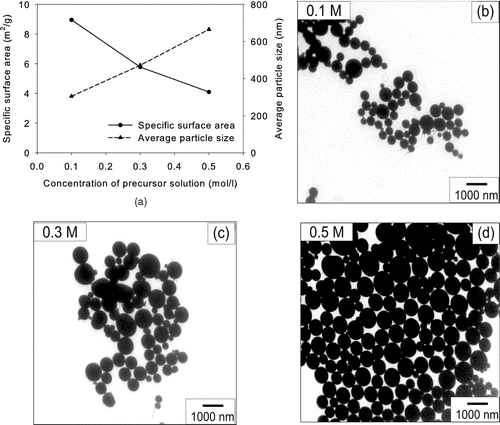
FIG. 5 (a) Specific surface areas and average particle sizes of silica particles made from TEOS at various temperatures and the precursor concentration of 0.5 M. TEM micrographs of silica particles obtained at (b) 1200, (c) 1350, (d) 1610, and (e) 1710°C.
